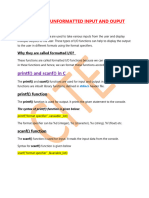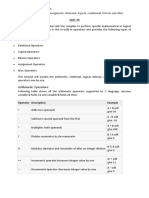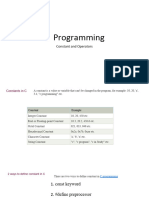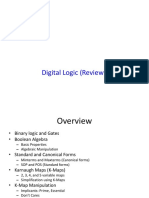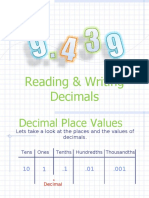0% found this document useful (0 votes)
8 views49 pagesModule 4 - 2 Operators and IO Statements
Uploaded by
2301710Copyright
© © All Rights Reserved
We take content rights seriously. If you suspect this is your content, claim it here.
Available Formats
Download as PDF, TXT or read online on Scribd
0% found this document useful (0 votes)
8 views49 pagesModule 4 - 2 Operators and IO Statements
Uploaded by
2301710Copyright
© © All Rights Reserved
We take content rights seriously. If you suspect this is your content, claim it here.
Available Formats
Download as PDF, TXT or read online on Scribd
/ 49
















